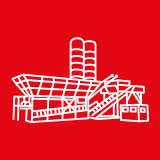C’est un équipement vibrant à mouvement ovale et forte force G, fonctionnant en position horizontale pour classer les matériaux à divers stades dans de nombreuses industries. Réglage simple et rapide de la longueur, de l’angle de course et de la vitesse selon l’application.
Crible Horizontal Galérie
MEILLEURE EFFICACITÉ, PLUS GRANDE ADAPTABILITÉ
Une longue durée de vie pour les applications les plus exigeantes, grâce à des composants de qualité, fiabilité et performance.
Le mouvement elliptique, validé par des tests virtuels et physiques, améliore l’efficacité du criblage et le volume de production tout en réduisant la recirculation.
Champs d'pplications
Les cribles horizontaux (MHS) offrent des performances exceptionnelles dans toutes les applications de criblage : mines, granulats, béton et recyclage d’asphalte.
Ils sont idéaux pour le criblage fin avec une grande proportion de produit proche de la taille des mailles, le criblage humide ou lorsque la hauteur disponible est limitée.
Découvrez les Cribles Horizontaux MEKA
Les points forts et détails sont présentés dans cette vidéo.
Visitez notre chaîne YouTube MEKAGlobal pour découvrir d’autres produits et réussites.
Crible Horizontal Spécifications Techniques
MHS 5162 |
MHS 5163 |
MHS 6162 |
MHS 6163 |
MHS 6202 |
MHS 6203 |
MHS 7202 |
MHS 7203 |
MHS 8202 |
MHS 8203 |
|
| Modèle à usage intensif | Disponible | Disponible | Disponible | Disponible | Disponible | Disponible | Disponible | Disponible | Disponible | Disponible |
| Largeur x Longueur (mm) | 1562x4877 | 1562x4877 | 1930x4877 | 1930x4877 | 1930x6096 | 1930x6096 | 2235x6096 | 2235x6096 | 2540x6096 | 2540x6096 |
| Nombre d'étages | 2 | 3 | 2 | 3 | 2 | 3 | 2 | 3 | 2 | 3 |
| Puissance (kW) | 22 | 30 | 30 | 30 | 30 | 30 | 37 | 37 | 37 | 37 |
| Réa (crible) (mm) | Ø620 | Ø620 | Ø620 | Ø620 | Ø620 | Ø620 | Ø620 | Ø620 | Ø620 | Ø620 |
| Réa (moteur) (mm) | Ø306-Ø365 | Ø306-Ø365 | Ø306-Ø365 | Ø306-Ø365 | Ø306-Ø365 | Ø306-Ø365 | Ø306-Ø365 | Ø306-Ø365 | Ø306-Ø365 | Ø306-Ø365 |
| Vitesse (rpm) | 730-870 | 730-870 | 730-870 | 730-870 | 730-870 | 730-870 | 730-870 | 730-870 | 730-870 | 730-870 |
| **Poids (kg) | 7496 | 8781 | 7781 | 9275 | 9085 | 10788 | 11850 | 13500 | 12162 | 14267 |
Les chiffres relatifs à la vitesse sont valables pour un moteur de 1500 tr/min. Les poids indiqués ne comprennent pas le moteur d'entraînement, les pieds de support, la plate-forme de maintenance, les goulottes d'entrée et de sortie.
Souhaitez-vous demander un devis ou recevoir des informations sur un crible horizontal ?
Souhaitez-vous recevoir un devis pour un crible horizontal MEKA ?
Avez-vous besoin d'un crible horizontal avec différentes options et configurations ?
Souhaitez-vous devenir revendeur de cribles horizontaux MEKA ?
Passons à l'étape suivante. Contactez-nous dès maintenant en remplissant le formulaire.
Formulaire d'information crible horizontal
Qu'est-ce que c'est Crible Horizontal?
Les cribles horizontaux sont des cribles à mouvement ovale et elliptique dont la surface est plate et horizontale et qui peuvent être positionnés de 0 à 10 degrés. Le mouvement ovale d'un crible horizontal est généré par un mécanisme vibrant à trois arbres.
Types de Crible Horizontal
Comment Crible Horizontal travailler?
Avantages de l'utilisation Crible Horizontal
Crible Horizontal les processus/applications
Les cribles horizontaux utilisent un mouvement elliptique à trois arbres pour accélérer et déplacer le matériau sur la surface. Les matériaux plus petits que les ouvertures du tamis passent au travers, les plus gros restent au-dessus, permettant une classification précise.
Les cribles horizontaux offrent un débit élevé et une grande efficacité de criblage.
Adaptés aux applications humides ou sèches.
Leur conception compacte et position horizontale réduisent les coûts d’investissement.
Le mouvement circulaire et l’angle rendent le crible plus résistant au colmatage.
Bien qu’ils soient largement utilisés dans les installations de concassage et criblage à haute efficacité (souvent dans la phase tertiaire), ils peuvent aussi servir en primaire et secondaire.
Outre la vitesse de fonctionnement, la longueur et l’angle de la course peuvent être ajustés selon l’application.
Les cribles horizontaux fonctionnent dans les conditions les plus difficiles avec le système de criblage humide.
Ils sont utilisés dans la préparation et l’enrichissement des minerais, dans les usines de concassage et de criblage de granulats, ainsi que dans tout secteur nécessitant un tri granulométrique des matériaux.































